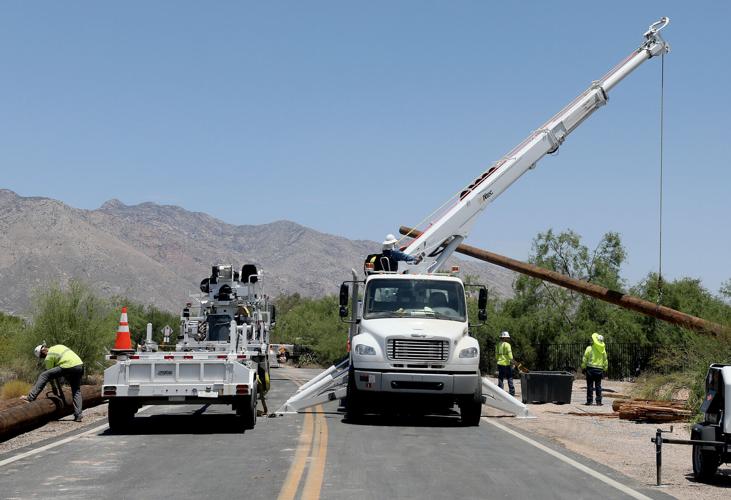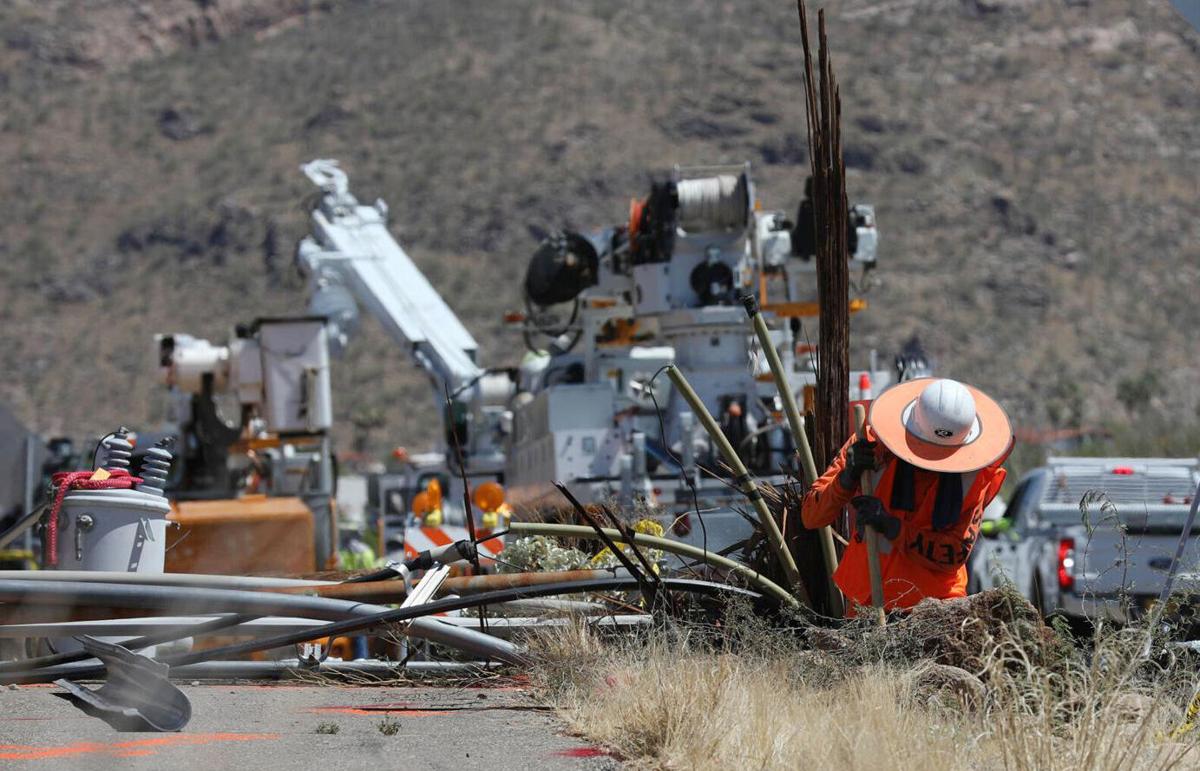Record-high temperatures in Tucson this week pushed Tucson Electric Power beyond its forecasted peak demand.
But TEP didn’t quite break a peak-demand record, which was set in 2021, and the company says it has lined up adequate reserves to handle demand spikes.
Amid record-high, triple-digit temperatures in the past week, TEP saw demand of 2,369 megawatts on Monday, the highest demand day in the past week, compared with a forecast peak of 2,265 MW, TEP spokesman Joe Barrios said.
This week’s demand was high but didn’t surpass TEP’s record peak demand of 2,446 MW on June 16, 2021.
Barrios said the company is well-prepared to handle higher peaks than forecast, with planned capacity reserves intended to cover extreme weather or significant power-plant outages.
“We know our service plays a crucial role in helping to maintain customers’ comfort and safety during high temperatures,” Barrios said. “We work to strengthen our grid throughout the year so that it’s as resilient as possible when summer arrives.”
In the Phoenix area, Arizona Public Service Co. and Salt River Project both broke peak-demand records on consecutive days last weekend.
The head of the state agency that regulates utilities noted that TEP, sister rural utility UniSource Electric, Arizona Public Service and the Salt River Project all had peak demand this week that outstripped forecasts.
In a news release calling the utilities’ success in keeping the lights on a “triumph” of cooperative planning efforts by regulators and the power companies, O’Connor cited figures showing TEP and UniSource Electric combined saw peak demand of 3,369 MW — just shy of their 3,612 MW capacity — compared with a combined forecast of 2,955 MW.
Barrios said the ACC figures used a slightly different demand calculation also based on peak usage over one hour, but UniSource didn’t top its demand forecast despite a spike in usage.
TEP is working hard and spending millions of dollars to upgrade its power grid, Barrios said.

Workers for Sturgeon Electric, a subcontractor for Tucson Electric Power, work along Valley View Road on July 21, where power lines fell after a monsoon storm rolled through the area Monday afternoon.
In 2022 alone, TEP spent more than $290 million to improve power lines, poles, transformers and other transmission and distribution equipment used to deliver service to customers, he said.
On top of high demand, TEP had to deal with significant damage from a storm earlier this week that snapped about 30 wooden power poles and left thousands of customers in the Foothills without power for hours while crews reached lines in difficult terrain.
TEP has an ongoing program of replacing wooden power poles with stronger steel poles.
But wooden poles remain in areas where the utility’s lift trucks can’t drive, and instead, linemen must climb the poles with spiked boots, Barrios said.
TEP improved a key measure of system reliability, the so-called System Average Interruption Duration Index (SAIDI), representing the total number of minutes of interruption the average customer experiences.
Barrios said the company improved its SAIDI score to 61.8 minutes last year, compared with 73.8 minutes in 2021, despite higher temperatures and increasing peak energy usage during the summer, which adds stress on equipment.
Check out some innovative and sometimes overlooked energy-saving strategies that can help you and your wallet survive Tucson's summer swelter.






